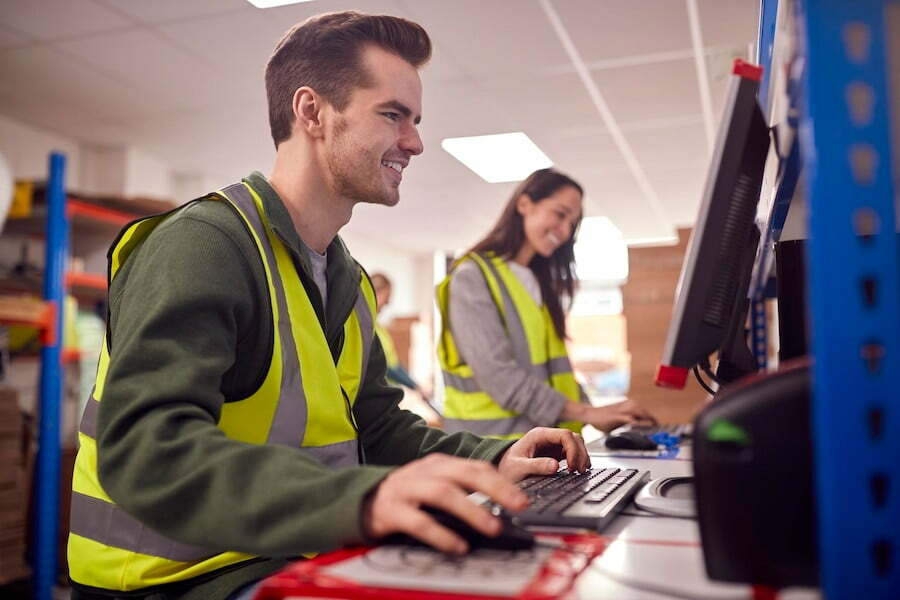
Address:
Plot No 37/1, 1st Floor, 6th Main, Hosur Rd, Singasandra, Bengaluru, Karnataka 560068

Address:
291 C Narasapura Industrial Area, Sy. No. 15, Karadubande Hosahalli Village, Narasapura Hobli, Kolar Taluk, Karnataka - 563133
 A large boost to efficiency is one of the key benefits that a goods-to-person process may provide. It almost eliminates any walking for warehouse workers in the aisles. Employees no longer waste time moving to and from multiple pallet racks since things are delivered directly to human pickers, packers, and replenishers. Employees will have more time to scrutinise the objects being chosen and focus on higher-level activities as a result. Goods-to-person helps boost efficiency in critical areas like cycle counting and quality control by decreasing time spent travelling around the warehouse. We investigated all of the possible cost savings in the fulfilment process while using other person-to-goods, collaborative robotic models in the early days, piloting the technology while creating our robots. We were only able to save 13% of the time getting to and from the pick station in our timed testing with them. Overall, we were only able to enhance fulfilment production by roughly one and a half to two times the usual rates. Today, we know that goods-to-person delivery may boost productivity by up to 500 per cent.
A large boost to efficiency is one of the key benefits that a goods-to-person process may provide. It almost eliminates any walking for warehouse workers in the aisles. Employees no longer waste time moving to and from multiple pallet racks since things are delivered directly to human pickers, packers, and replenishers. Employees will have more time to scrutinise the objects being chosen and focus on higher-level activities as a result. Goods-to-person helps boost efficiency in critical areas like cycle counting and quality control by decreasing time spent travelling around the warehouse. We investigated all of the possible cost savings in the fulfilment process while using other person-to-goods, collaborative robotic models in the early days, piloting the technology while creating our robots. We were only able to save 13% of the time getting to and from the pick station in our timed testing with them. Overall, we were only able to enhance fulfilment production by roughly one and a half to two times the usual rates. Today, we know that goods-to-person delivery may boost productivity by up to 500 per cent.  Goods-to-person is the most comprehensive solution we’ve discovered, in addition to being the fastest and most adaptable. Picking and replenishment are also positively affected by this solution, which can improve accuracy throughout the fulfilment process. It offers an excellent way to cut expenses associated with mispicks, misshipments, shrinkage, and mistakes. It accomplishes this by allowing robots to deliver only one item type to each employee at a time, reducing the chances of a picker making a mistake and affecting eCommerce orders Other collaborative autonomous mobile robots like person-to-goods and virtual conveyors can supplement a human worker in the aisles, but they still need a significant amount of travel time. In the long term, this diminishes productivity and precision, allowing greater space for error and wasted time in the warehouse.
Goods-to-person is the most comprehensive solution we’ve discovered, in addition to being the fastest and most adaptable. Picking and replenishment are also positively affected by this solution, which can improve accuracy throughout the fulfilment process. It offers an excellent way to cut expenses associated with mispicks, misshipments, shrinkage, and mistakes. It accomplishes this by allowing robots to deliver only one item type to each employee at a time, reducing the chances of a picker making a mistake and affecting eCommerce orders Other collaborative autonomous mobile robots like person-to-goods and virtual conveyors can supplement a human worker in the aisles, but they still need a significant amount of travel time. In the long term, this diminishes productivity and precision, allowing greater space for error and wasted time in the warehouse. 
Plot No 37/1, 1st Floor, 6th Main, Hosur Rd, Singasandra, Bengaluru, Karnataka 560068

291 C Narasapura Industrial Area, Sy. No. 15, Karadubande Hosahalli Village, Narasapura Hobli, Kolar Taluk, Karnataka - 563133

88842 22240

